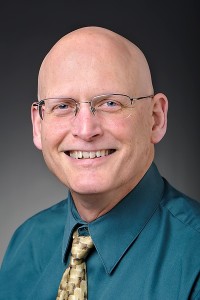Through the Atmosphere: Winter/Spring 2017

Steve Ackerman. Credit: Jeff Miller, UW Communications.
This issue of Through the Atmosphere (TtA) addresses several research activities within the Space Science and Engineering Center (SSEC) and the Cooperative Institute for Meteorological Satellite Studies (CIMSS) that are now realizing new results.
- Scientists and educators at SSEC and CIMSS, along with our NOAA colleagues, have long anticipated GOES-16, the newest geostationary weather satellite in the United States. It was launched in November 2016. Our successful participation in this program also includes education training for K-12 teachers from across the nation. As part of this “From orbit to classroom” activity, 15 teachers attended the launch and are preparing to use this national resource in their teaching.
- As we await data from GOES-16, scientists are now preparing for the 2017 launch of the Joint Polar Satellite System-1, or JPSS-1. On board that satellite are two instruments with which scientists at SSEC and CIMSS have become very familiar: VIIRS and CrIS. Two similar instruments have flown on the Suomi-NPP satellite, and many folks have developed algorithms and used those data to study our planet. But, before these new observations can be used, the instruments must be characterized pre- and post-launch as discussed in the article “On deck.”
- Using data from geostationary and polar-orbiting satellites such as GOES-16 and Suomi-NPP, SSEC and CIMSS scientists have a long history of studying hurricanes. In fact, a recent study published in the journal Nature continues this heritage by explaining connections between hurricane activity and intensification.
- Finally, Hank Revercomb was recently recognized with the honorific title of Fellow of the American Meteorological Society. We highlight Hank’s impressive scientific achievements along with a recap of other award winners since the last issue of TtA.
This Director’s Note originally appeared in the Winter/Spring 2017 issue of Through the Atmosphere, SSEC’s biannual magazine. View the full issue online here.
